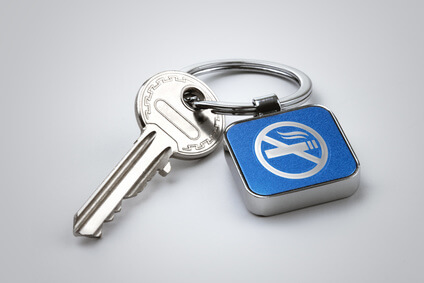Have your tenants been smoking? Vital signs to look for.
Published on October 23, 2017 by Sarah Mac

If like most landlords you prefer to not allow smoking in your property, you will have taken steps to make it clear through your tenancy agreement that it is prohibited. After all, the damage it can cause can be significantly expensive to rectify.
The trouble is, however, that rules are often broken. If you are concerned that your tenants are smoking inside your property when you have clearly banned it, the following tips will help you detect it and present evidence to enable you to take appropriate action. We’ll also broach the subject of how to bring up the issue with your tenants, as well as outlining steps to take to deal with any damage that has resulted from the smoking.
Are your tenants smoking? Here’s what to look for.
Smells – aside from the obvious smell of cigarette or cigar smoke, you should also look out for attempts to cover it up. Vital signs could be a heavy mist of air freshener, scented candles, diffusers or the obvious open windows and back doors even during inclement weather.
Smoke odour clings to fabric, so in a smoking household you’ll readily detect stale smoke on curtains, soft furnishings, carpets and linen. It will also be apparent on walls and ceilings and can be a real challenge to eliminate without repainting, which is precisely why landlords tend to ban smoking as a rule.
Stains – yellowing of papered or painted walls as well as ceilings and light fittings will commonly follow regular smoking indoors. Look out for even the smallest stains which could reveal that all is not as it should be, and there may even be yellowing around extractor fans in bathrooms and around windows that smokers may have been hanging out of. Again look beyond the obvious signs: have the tenants repainted the walls ahead of their mid-term inspection or check-out? If so this could be an attempt to cover up yellowing associated with smoking.
Burn marks – brown-rimmed burn holes in carpets, curtains, soft furnishings and linens are another tell-tale sign that careless smokers have been present. There may even be evidence of such marks on sinks and toilet seats. Looking beyond the obvious signs is again important: strategically placed cushions or ornaments, rugs or moved furniture could indicate an attempt to hide burn marks so be sure to make your investigations thorough.
Physical signs – cigarette ends, ash and ashtrays are clear signs that tenants or their guests have been smoking, but you may need to apply a probing approach if you are going to uncover attempts to hide these giveaways. A look behind curtains on windowsills for example may reveal a secreted ashtray or dropped ash; ashtrays emptied into waste bins ahead of an inspection are another obvious way to try to conceal smoking. Be sure to look behind furniture or in nooks and crannies that aren’t regularly dusted, as ash can easily blow in, and check for ash-stains on crockery too, as it is not uncommon for tenants to use plates or saucers as makeshift ashtrays.
How to approach the issue of smoking
So, you have detected that smoking has been going on in your property. How to approach the issue? Confrontation is never easy, and tact and diplomacy most definitely reign supreme in these situations. The following advice should assist you in planning your approach.
Do not: fly off the handle and make wild accusations. If there is any lack of clarity at all that smoking has been taking place, you will need to be very careful in your approach.
Do: remind tenants of their obligations under the tenancy agreement. Bear in mind that they may not be fully aware of the terms of the agreement, so an approach involving explaining the rules in an amiable manner could be the best way forward.
Do: politely explain that damage caused by smoking, when smoking has been prohibited under the terms of the tenancy agreement, will have to be covered by the tenant and that will therefore be making a deduction from their deposit.
How to repair smoking related damage
The only way to remove the smell of smoke from your property is to arrange for a professional clean. If the tenants have been smoking and are in breach of the tenancy agreement, then they will be expected to foot the bill for the cleaning.
Replacing carpets, soft furnishings and linens will also be necessary, and again this will be down to the tenants to cover the cost if smoking was prohibited. The same goes for any damaged furniture or fixtures and fittings.
Cleaning smoke stains from walls and ceilings is essential ahead of re-painting, otherwise you will find that the stains simply sweat back through eventually. As before, these are costs that you will be able to claim from the tenant, providing smoking was outlawed in the tenancy agreement. Damage caused by smoking can never be considered fair wear and tear.
In Summary
There is a saying: rules are made to be broken. In other words, it is fairly likely that you will at some point experience a tenant who, despite being presented with a clearly set-out tenancy agreement, will rebel against your stipulations.
However, you can do everything possible to ensure your rules are clearly understood by your tenants. Issuing regular reminders certainly does no harm, and mid-term inspections will help to reveal anything suspicious before it is too late. A set of house rules pinned inside a kitchen cupboard is a favourite adopted by many landlords.
A professionally compiled mid-term report and unbiased, professional check-out reports will go a long way to providing you with the evidence you need to make a tenancy deposit claim. To book yours, please get in touch.

